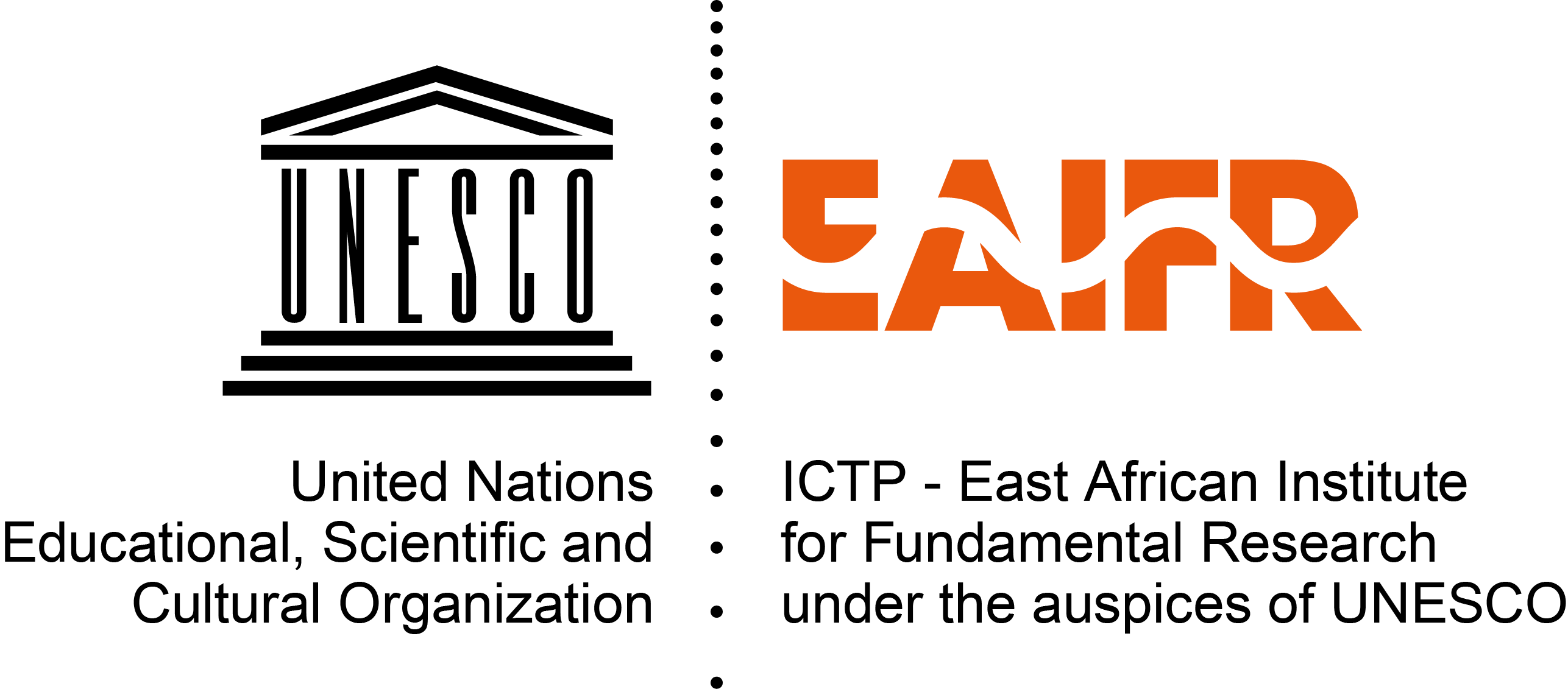ICTP-East African Institute for Fundamental Research
KIST2 Building CST
Nyarugenge Campus
University of Rwanda
Kigali, Rwanda
GEO@EAIFR Webinar Series 2024
Dr. Freysteinn Sigmundsson from the Nordic Volcanological Center, Institute and Faculty of Earth Sciences at the University of Iceland (Reykjavik, Iceland) will discuss the November 2023 Grindavik dike injection and its Implications for continental rifting.

The East African Institute for Fundamental Research (EAIFR) and the International Centre for Theoretical Physics (ICTP) wish to inform those who may be interested of a GEO@EAIFR webinar. This seminar will take place on June 20, 2024 and will be broadcast live on ZOOM. It will also be recorded and later posted on the ICTP-EAIFR YouTube channel, where one can find the previous recorded GEO@EAIFR webinars. Below all the details:
Speaker: Dr. Freysteinn Sigmundsson from the Nordic Volcanological Center, Institute and Faculty of Earth Sciences, University of Iceland, Reykjavik, Iceland
Title: The ongoing period of high volcanic activity in Iceland and the November 2023 Grindavik dike injection: Implications for continental rifting
When: June 20, 2024 at 14:00 (Kigali time).
Register in advance for this meeting by clicking here.
All are very welcome.
Abstract: Volcanoes have had a profound influence on live in Iceland, and volcanic activity that began in 2021 on the Reykjanes Peninsula in SW-Iceland poses major societal challenges. Repeated eruptions, and intrusions of magma have occurred inside the crust, releasing forces that have accumulated due to the movements of the tectonic plates in Iceland, causing ground fracturing with devastating effects in the town of Grindavík and surroundings. The initial dike near the town of Grindavík was 15 km long, forming rapidly on 10 November 2023 and propagating under the town of Grindavík. From just before noon on 10 November until midnight, around 25 MW≥4 earthquakes occurred, two of which were of MW5.2. Three-dimensional ground deformation is well resolved both temporally and spatially with dense Global Navigation Satellite System (GNSS) geodetic observations, which record cumulative displacements up to about 80 cm occurring mostly over 6 hours in the evening of 10 November and continuing at much reduced rates in the following days. Interferometric analysis of synthetic aperture radar images records also well the dike deformation, which occurred simultaneously with deflation over the nearby central part of the Svartsengi volcanic system. Geodetic modelling infers that the maximum flow rate into the dike was 9500 m3/s, between 18:00 and 19:00 on November 10. We infer that the massive magma flow into the dike was established with only modest overpressure in the feeding magma body, a sufficiently large pathway opening at the boundary of the magma body, and pre-failure lowering of pressure along the pathway that had occurred through gradual build-up of high tensile stress over the previous eight centuries. This explains the unprecedented fast maximum magma flow rates that we infer. Such high flow rates provide insight into the formation of giant dike swarms under conditions of high tensile stress, and imply a high hazard potential for dike intrusions, considering their potential to transition into eruptions.
Biography: I have been a researcher at the Nordic Volcanological Centre, Institute of Earth Sciences, University of Iceland since 2004. I study volcanism, magmatic and tectonic processes, plate spreading, earthquakes and glacioisostasy, including research related to recent eruptions in Iceland since 1991, and studies of the Earth's response to the current retreat of ice sheets. I am also interested in the application of Global Navigation Satellite System (GNSS) geodesy and interferometric analysis of synthetic aperture radar (InSAR) images to map deformation and study geological processes, using the opportunities offered by the Icelandic natural laboratory. I am actively involved in international collaboration on volcanism and crustal deformation. I was the contact point (2013-2022) and founding member of the permanent Icelandic Volcano Geohazard Supersite (as part of the GEO Geohazard Supersites and Natural Laboratories (GSNL) initiative, with the support of CEOS, the Committee on Earth Observation Satellites). I coordinated the FUTUREVOLC project 2012-2016, a European Volcano Supersite in Iceland: a monitoring system and network for the future and joint research within the EUROVOLC project 2018-2021 on open infrastructure, networking and joint research in volcanology.



